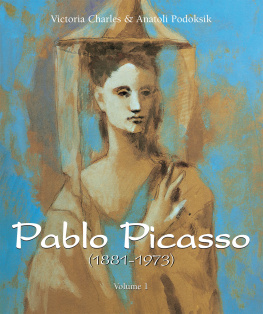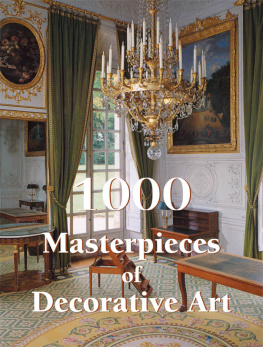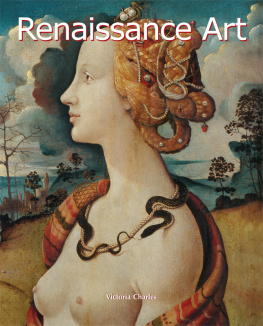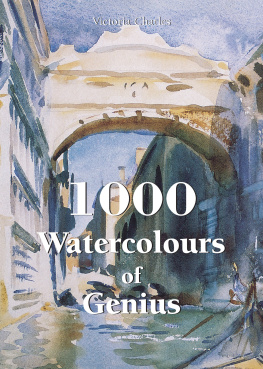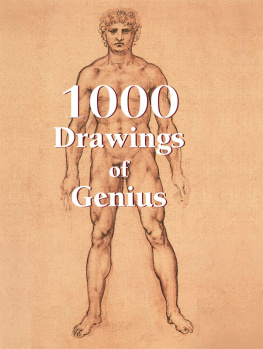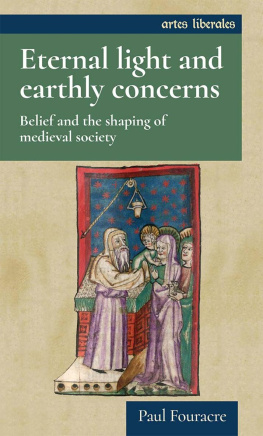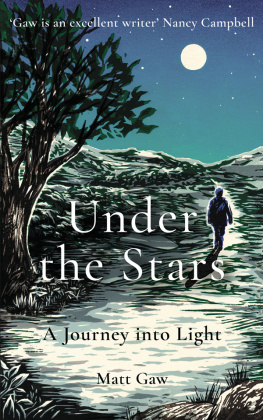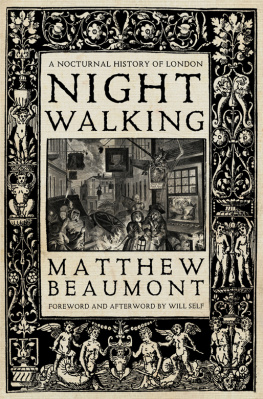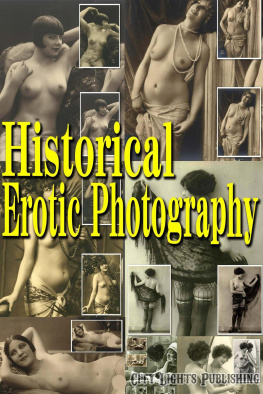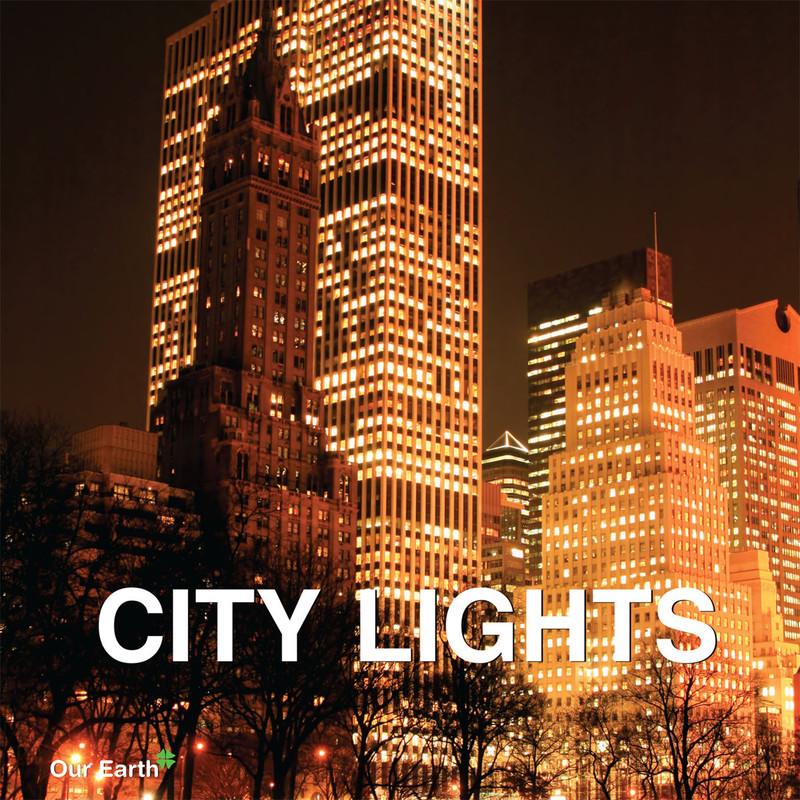
Baseline Co Ltd.
61A-63A Vo Van Tan Street
4th Floor
District 3, Ho Chi Minh City
Vietnam
Confidential Concepts, worldwide, USA
Parkstone Press International, New York, USA
Image-Bar www.image-bar.com
Natalia Bratslavsky | Dreamstime.com
Barbara Helgason | Dreamstime.com
Gennadiy Kondratyev | Dreamstime.com
Jhaviv | Dreamstime.com
Photoquest | Dreamstime.com
Sergey Rogovets | Dreamstime.com
All modification and reproduction rights reserved internationally. Unless otherwise stated, copyright for all artwork reproductions rests with the photographers who created them. Despite our research efforts, it was impossible to identify authorship rights in some cases. Please address any copyright claims to the publisher.
ISBN: 978-1-78525-924-1
CITY LIGHTS

Contents
INTRODUCTION
AFRICA
ASIA
EUROPE
OCEANIA
NORTH AMERICA
CENTRAL AND SOUTH AMERICA
INDEX
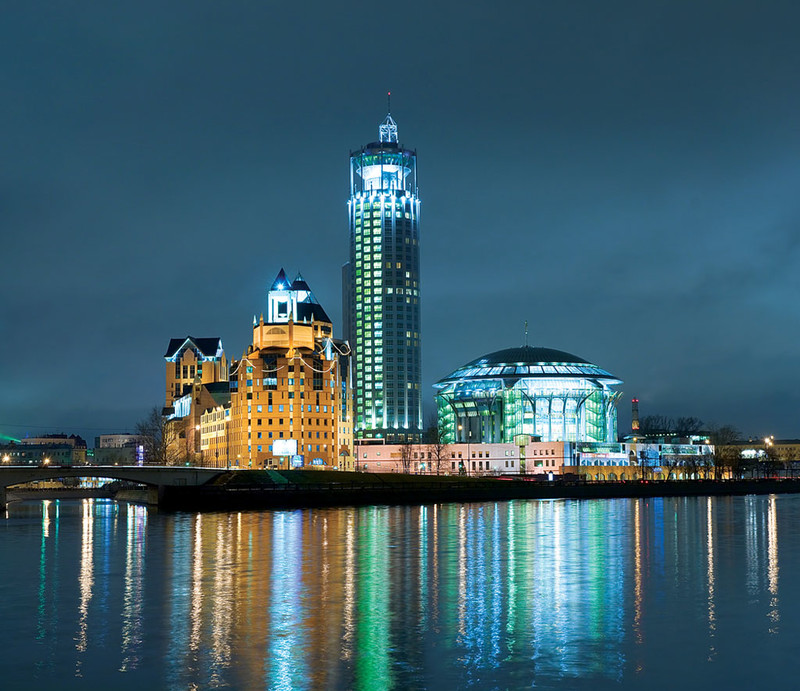
Business Centre, Moscow, Russia.
INTRODUCTION
Although the deliberate harnessing of light began in ancient times, as demonstrated by countless remnants of torches or other oil lamps found at historic sites, public lighting long remained essentially non-existent, except during feasts and festivals. It was not until the 15th century that people began to hang lights in their homes; however, maintenance of such lamps was the responsibility of the home-owner, and any neglect on his part would plunge the narrow streets into darkness. At this time, the candles that filled the lanterns gave off but little light, so when the first streetlamps with reflective mirrors were installed in 1771, the improved illumination was remarkable. In 1785, Swiss physicist Aim Argand perfected a lamp, known as the Argand lamp, which improved the quality of lighting that had formerly been weak and irregular.
While the oil lamp continued to undergo enhancements with various inventions, particularly those of Antoine-Arnault Quinquet and Ambroise Bonnaventure Lange, gas lighting was experiencing its beginnings in Europe in the early 19th century (China had already been using it for a long time), thanks to the discovery in 1792 of a method for distilling coal by Scottish engineer William Murdoch and French inventor Jean-Pierre Minckelers.
The kerosene lamp enjoyed immense success in the 1860s as a result of numerous oilfields in the United States. However the spreading use of electricity, which had been encouraged by the experiments and discoveries of Humphry Davy in England and Lon Foucault in France, but most particularly those of Russias Paul Jablochkoff, an engineer who invented an electric candle in the late 1870s, signified a veritable revolution. In 1879, Thomas Edison finalised an incandescent lamp that found its way to Europe in 1882. That same year, Edison invented the first electric telephone exchange, which ran an electric current throughout Wall Street, confirming his status as the founding father of modern electricity.
If public lighting originally permitted people to orient themselves first and foremost, its most valued quality, perhaps, was its related role in promoting public security by casting light on shadowed, disturbing streets.
In addition to serving as a reliable public utility, urban lighting offered new liberty to populations, who no longer had to set their lifes rhythms according to the suns movements. From this point on, a nocturnal social life flourished and numerous nighttime entertainment venues began to emerge.
Today, light is no longer restricted to purely utilitarian service. Not only is it used as an essential element in billboard advertisements notable examples include the massive, lighted ads of Picadilly Circus, Broadway or Times Square but in connection with architecture, illumination can become a veritable artistic medium. Many cities now organise sound and light shows, where engineers and designers try to outdo each other in terms of inventiveness to produce dazzling spectacles. Bridges, skyscrapers and other monuments are now liberated from cold and the night sky, rising draped in light as powerful celebrations of electricity.
AFRICA
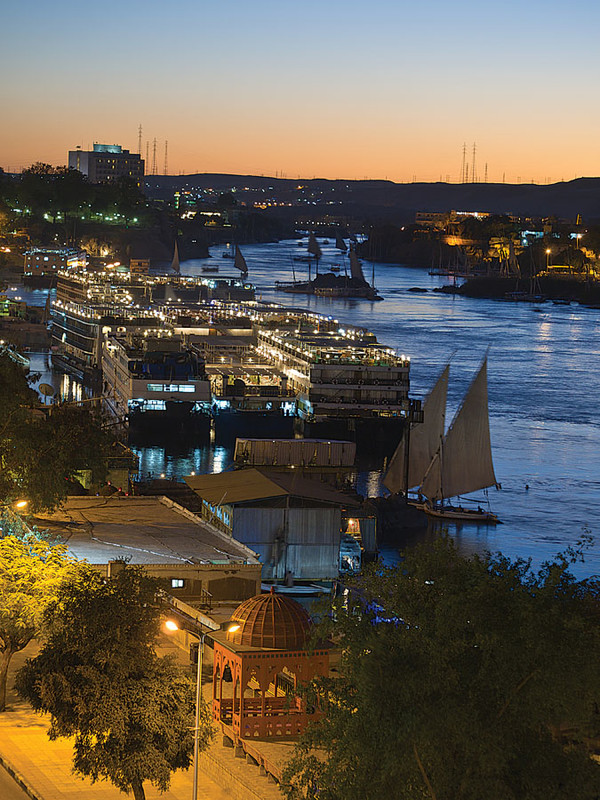
Aswan after sunset view over the Nile, Aswan, Egypt.
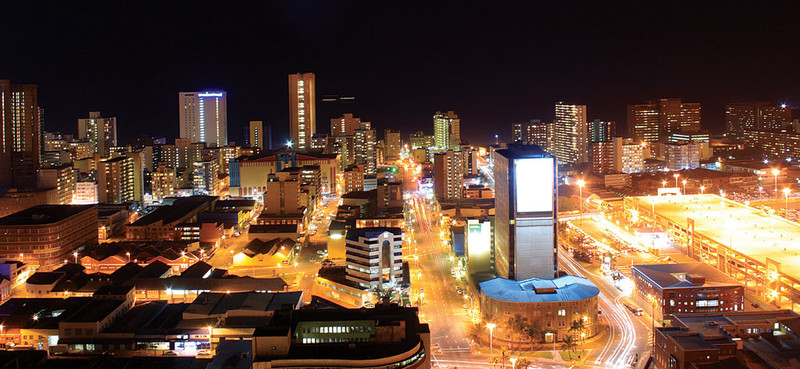
Durban, South Africa.
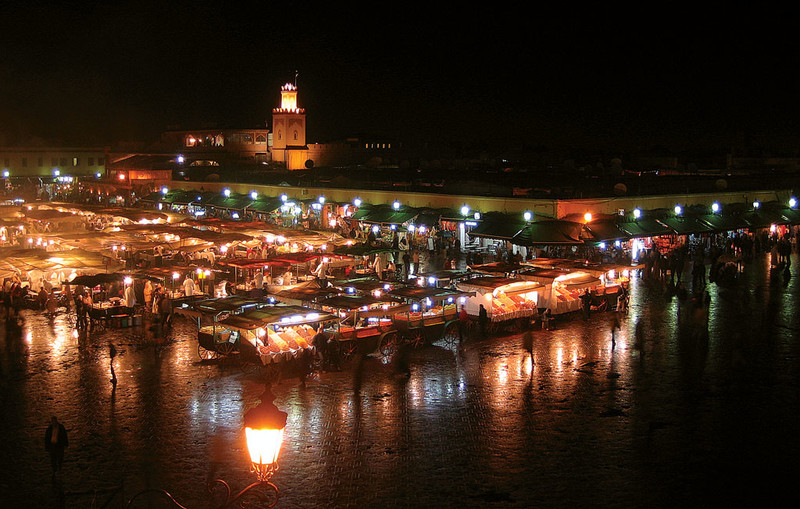
Djemaa el Fna, Marrakech, Morocco.
Djemaa el Fna square was constructed in the 11th century at the entrance to the medina, the historic heart of Marrakech. Its name, which means assembly of the dead, dates back to the squares former incarnation as a place where the heads of people executed by order of the sultan were publicly displayed. Situated between the souq and the Koutoubia Mosque, whose minaret is illuminated at night by a cloak of lights, Djemaa el Fna is undeniably a landmark of the city.
From dawn until dusk, the market swarms, a joyous bazaar where tourists and locals mix. In the square cluster stands selling fresh fruit, juice and traditional dishes; water carriers, snake charmers and children playing with monkeys also gather in the space. In the late afternoon and evening, Djemaa el Fna lights up. The lights come on and artists that were absent before enter the scene, filling the square with dancers, narrators, musicians and poets.
Essentially the nerve centre of Marrakech, offering a magnificent concentration of regional cultural traditions, Djemaa el Fna was appointed as an indispensable cultural heritage site by UNESCO in 2008.
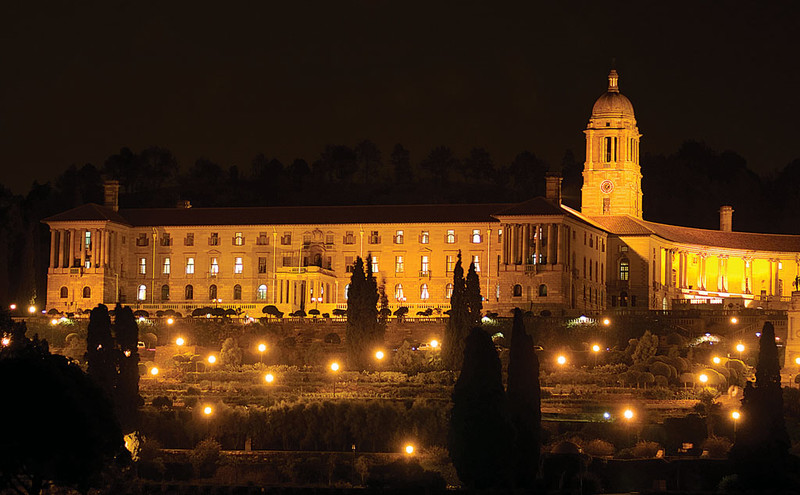
Union buildings in Pretoria, South Africa.
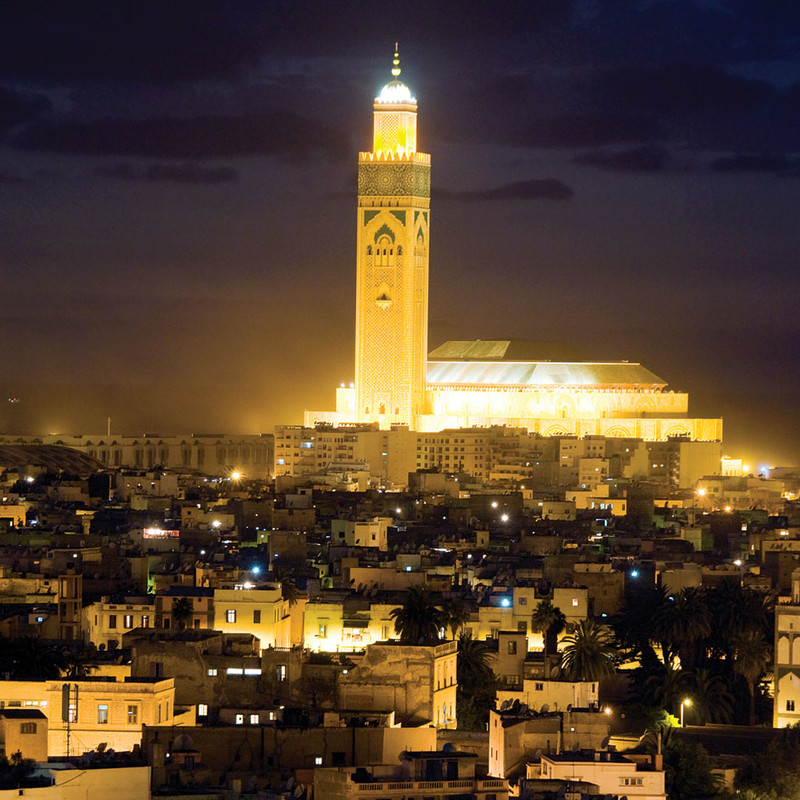
Hassan II Mosque, Casablanca, Morocco.

Pyramid of Khafre, the Great Sphinx and the Great Pyramid of Giza
(also called the Pyramid of Cheops), Giza, Egypt.
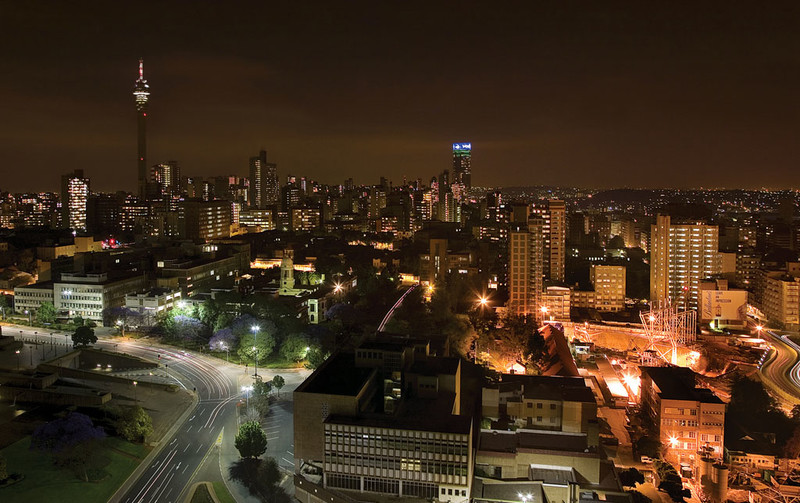
Johannesburg, South Africa.
Johannesburg is the largest city in South Africa and situated in the wealthiest province of the country, Gauteng. A sprawling urban area, Johannesburg called Joburg by many is a rapidly growing city that is constantly undergoing development, as it is the centre of the countrys commercial, financial, industrial and mining enterprises.
The Hillbrow Tower, visible to the far left of this photograph, is a telecommunications tower built in Hillbrow, a suburb of Johannesburg, between 1968 and 1971. With its height of nearly 270 metres, it dominates Johannesburgs skyline and has become a landmark of the city, evident in the use of the tower as part of the b in the citys official logo.
Next page

